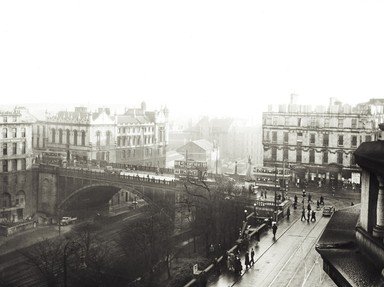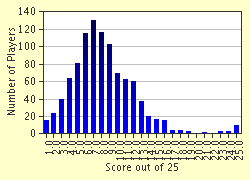Quiz Answer Key and Fun Facts
1. In which of these battles did the British and Indian troops register a victory over the Japanese?
2. Who remarked 'There was no room for manoeuvre and no scope for cleverness, I had to blast my way through three defensive systems, the centre of which was the Siegfried Line' ?
3. What was the German defensive line in Italy during WWII called?
4. Which battle is regarded as the biggest naval battle in history?
5. After losing which naval battle did Hitler relieve Admiral Erich Raeder of his post as commander in chief of the German Fleet?
6. During World War II, what British destroyer intercepted the German auxiliary cruiser Altmark?
7. Which German admiral was the originator of the wolf-pack submarine technique?
8. The British inflicted a crushing defeat on the Italians during the North African Campaign in 1941. Which battle?
9. What inconclusive naval battle was fought between the US and Japanese fleet in 1943?
10. At which place did the Germans find the grave of 4,500 Polish officers in 1943 who were supposedly killed by the Soviets?
11. Which British commander founded the modern Indian and Pakistani armies during the course of the Second World War?
12. Whose army was nicknamed the 'Desert Rats' ?
13. During the war, a large number of artificial harbours were constructed to be towed across the English Channel to the coast of France. What were these harbors called?
14. During the war, what did the word Pluto mean (what does it stand for)?
15. Some neo-Nazi youths wear shirts with the number '88'. What is the significance of this number?
16. Who was in command of the British XIII Corps in Sicily and Italy?
17. During which naval battle between the US and Japan did America lose the cruisers Quincy, Vincennes, and Astoria?
18. What name was given to American Volunteer Group of fighter airplane pilots during the war?
19. During the attack on Pearl Harbor, the Japanese bombarded several cruisers, navy airplanes and destroyed or severely damaged five major battleships. Four of them were the USS Arizona, Oklahoma, West Virginia and California. Which was the fifth one (later repaired)?
20. Which British cruiser ultimately sank the German battleship Bismarck in 1941?
21. Who remarked 'I'm glad we've been bombed. It makes me feel I can look the East End in the face' ?
22. Who was the commander of the Fast Carrier Striking Force which attacked Pearl Harbor in Dec 1941?
23. Who commanded the Japanese forces in the battle of Iwo Jima?
24. Who proclaimed himself as the Fuehrer of Germany after the death of Hitler in 1945?
25. What was the total cost of World War II (in dollars)?
Source: Author
swashbuckler
This quiz was reviewed by FunTrivia editor
bloomsby before going online.
Any errors found in FunTrivia content are routinely corrected through our feedback system.

